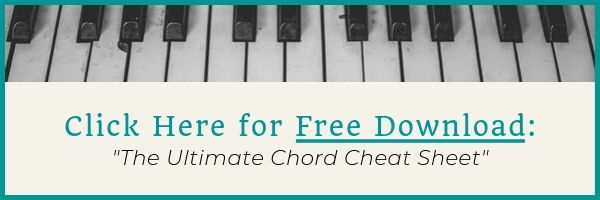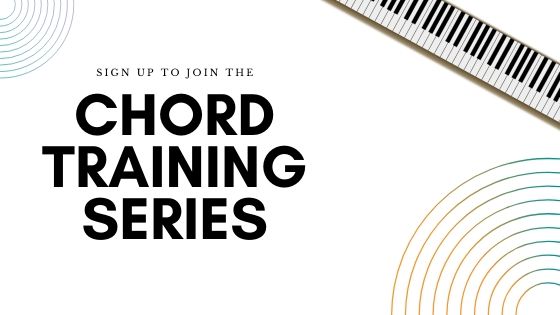Dbm Piano Chord Notes, Finger Positions & How to Play It
(D Flat Minor Chord)
The Dbm piano chord is not one you run across every day. It's a bit obscure and quite uncommon so if you find it in something you're playing, it can stop you in your tracks.
Not to worry though, here you'll learn the notes of the D flat minor chord as well as:
- which fingers to use for Dbm
- Dbm/F piano chord
- Dbm/Ab piano chord
- inversions for D flat minor
- and what does C#m have in common with Dbm?
Dbm Piano Chord Notes
The notes of the Dbm piano chord are Db, Fb, Ab.
Dbm is a minor chord and what is confusing for some is the Fb.
The Fb note on piano is the same key as the E key. So practically speaking, you are playing Db, E and Ab for this chord but we can't call it that because of the key signature for this chord. It needs to be called Fb.
This chord is exactly the same as the C#m chord (and more on this in the theory section) and it can be easier to think of those notes to play this chord. The C#m chord is C#, E, G#.
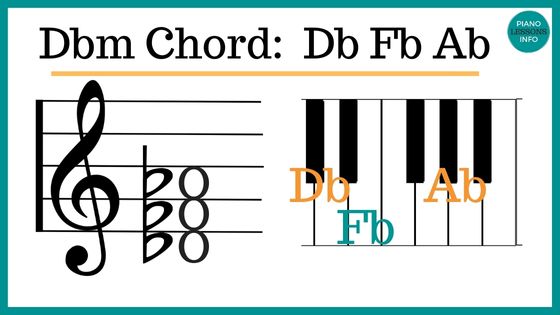 Dbm Piano Chord Chart
Dbm Piano Chord ChartDb or D flat is the left black key in the group of 2 blacks keys.
Fb or F flat is the E key.
Ab or A flat is the middle black key in the group of 3 black keys.
Finger Positions for Dbm Piano Chord
The Dbm chord can be played the same way as every other chord in root position and I recommend starting with fingers 1, 3 and 5. That's your thumb, middle finger and pinkie in both the right hand and the left hand.
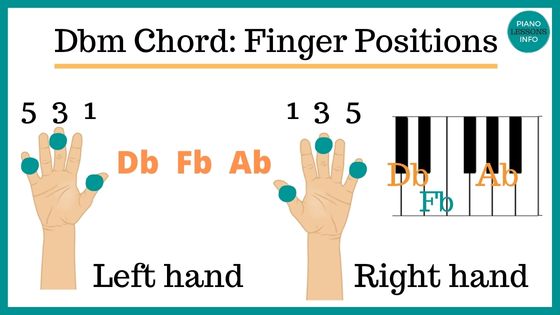
When you start playing chords on black keys like this, a common question I get is, "can you play so far up the keyboard?" And yes, that's fine. It may seem strange to play so "high up" or close to where your music is but it's doable and a good way to go.
Dbm/Fb Chord Notes
If you see a Dbm/F chord in means to play Fb (that's the E key on the piano) as your bass note in your left hand. So Fb is your lowest note. All of the other notes for the Dbm chord will come above that.
Dbm/Ab Chord Notes
When you see Dbm/Ab, it means that you need to play Ab as the lowest note in your left hand. This is the bass note for the chord and the lowest one that should be played. All of the other notes from the Dbm chord need to come above this.
Inversions for D Flat Minor Chord
If the Dbm chord is pretty new to you, it's a great opportunity to practice inversions for it. That will help this chord seem more familiar and much easier to play now and the next time you come across it.
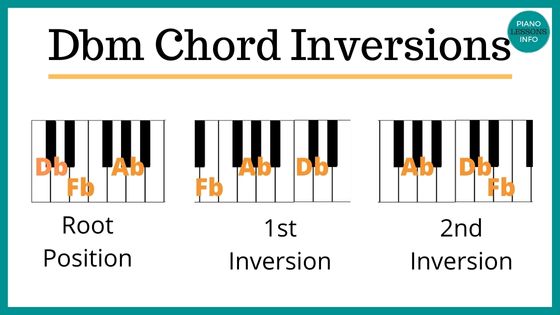
The inversions for D flat minor are:
Root: Db, Fb, Ab
1st inversion: Fb, Ab, Db
2nd inversion: Ab, Db, Fb
(You could also learn the C#m inversions to make it easier on you mentally. They are here on the C#m page.)
D Flat Minor Chord Theory
As I mentioned above, the Dbm chord is exactly the same as the C#m chord. However, they are not interchangeable. If you're playing in a key with flats, you'll use D flat minor. If you're playing in a key with sharps, you'll use C sharp minor.
Flats and sharps generally don't mix when naming chords so it's also best for you to keep them separate.
The other difference here is that C# minor is an actual key signature while Db minor is not. Dbm only comes up when you are playing in a key with LOTS of flats. C#m however is found in the key of A which has 3 sharps. A very common key signature to play in.
I hope that helps you. If you need more help understanding key signatures, visit the key signatures page.
If you need to look up more chords, visit the Piano Chord Charts page or download your own copy below.
Free Download:
Ultimate Chord Cheat Sheet

Subscribe below and get free access to the (printable) Ultimate Chord Cheat Sheet.
Recent Articles
-
Piano Notes Chart
Nov 20, 23 10:21 PM
Find a piano notes chart for treble clef and bass clef notes as well as the different types of notes. -
D Chord on Piano + Diagram, How To & Theory
Oct 24, 23 12:20 AM
Learn how to play the D chord on piano with diagram, fingering, D/A, D/F# and a theory explainer. -
Diminished Piano Chords: Chart & How to Make Them
Oct 09, 23 09:23 PM
Learn the different diminished piano chords and how to make them. Here you'll find both a diminished chord chart and an explanation.
- Home
- 14 Day Chord Challenge
- Dbm Piano Chord
Free Download:
Ultimate Chord Cheat Sheet

Subscribe below and get free access to the (printable) Ultimate Chord Cheat Sheet.


